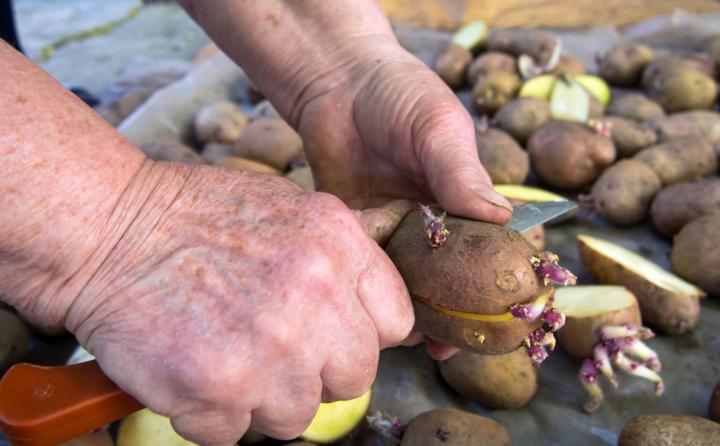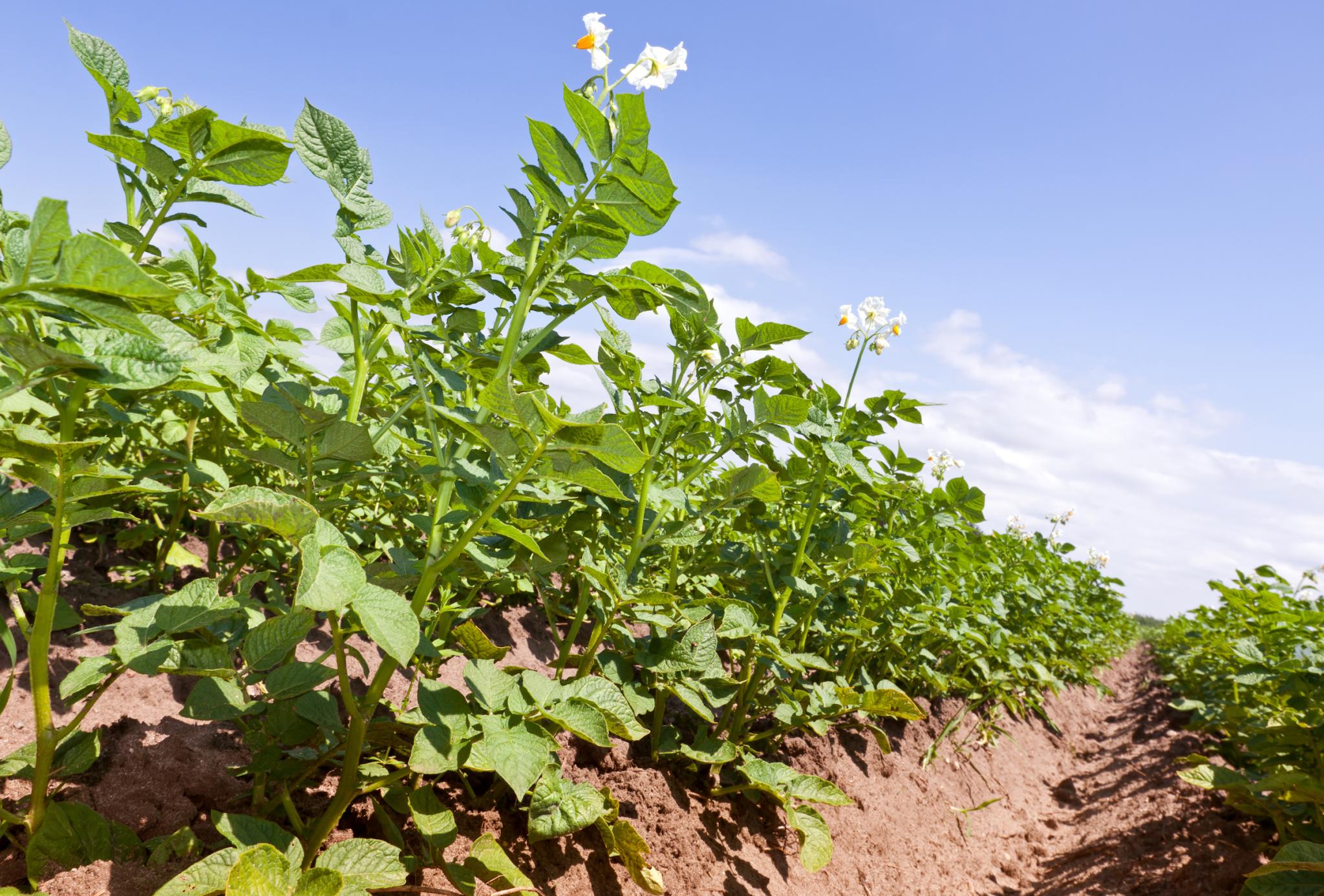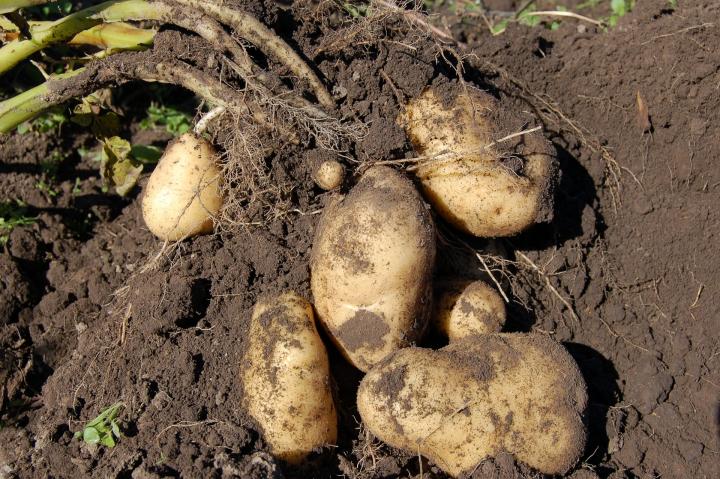
Dig into the basics of planting, growing, and storing potatoes
Read Next
Types
Despite the limited options in the grocery store, gardeners know there’s much more to potatoes than the traditional Idaho white potato. There are over 100 types of potatoes, varying in skin color, flesh color, and size from large to fingerling! Floury types are perfect for roasting or mashing, while firm, waxy potatoes are superb boiled or as salad potatoes. You can learn all about potato varieties in the section below.
There are three classifications for potatoes based on when you harvest (vs. when you plant). If you harvest for storage, be sure to choose the right type:
- Early-season potatoes: first to be planted in early spring. Grow quickly (60 to 80 days), ready to harvest by early summer, tender flesh, thinner skin, store up to a few weeks.
- Mid-season potatoes (aka second early potatoes or “earlies”): mature in 80 to 100 days, typically lifted up from the second half of summer, store up to a month.
- Late crops: mature in 100 to 130 days, best for storing, lasting 2 to 3 months in the right conditions; planted in August and harvested in fall.
Also, decide on the texture and flavor of your potatoes, and how you’d like to eat them:
- Dry-fleshed, mealy potatoes are fantastic for baking, frying, and mashing. Russets and long white potatoes are a favorite for mashed potatoes, easily absorbing the butter and sour cream while maintaining that light and fluffy texture.
- Moist, waxy, round potatoes are great in soups, curries, frittatas, and salads because they don’t fall apart when cooked. You can pan-fry leftover boiled potatoes. When you mash waxy potatoes, they can become sticky.
- Red-skinned potatoes are often used for boiling or for potato salads.
Some popular potato varieties, such as ‘Yukon Gold’, fall somewhere in between truly waxy and mealy.
There are over 100 potato plant varieties! Go beyond the Idaho potato to explore more exotic and delicious options. See our article on choosing the best potato varieties!
Early Varieties:
- ‘Irish Cobbler’: tan skin, irregular shape (great heirloom potato for delicious mashed potatoes!)
- ‘Red Norland’: deep red skin, sweet, delicate flavor, great in potato salads or boiled
- ‘Mountain Rose’: red skin and pink flesh, resistant to some viruses
Mid-Season Varieties
- ‘Yukon Gold’: popular, tan skin and buttery-yellow flesh, mid to large size
- ‘Red Pontiac’: red skin, deep eyes (easiest and most adaptable red potato there is to grow)
- ‘Viking’: red skin, very productive
- ‘Chieftan’: red skin, resistant to potato scab, stores well
Late Varieties
- ‘Katahdin’: tan skin, resistant to some viruses
- ‘Kennebec’: tan skin, resistant to some viruses and late blight
- ‘Elba’: tan skin, large round tubers, resistant to blight and potato scab
- All Blue Potatoes
- ‘Fingerling Salad’ potatoes
Gardening Products
Cooking Notes
Potatoes can be prepared in many ways: boiled, mashed, cut into pieces and roasted, french-fried, scalloped, made into dumplings or pancakes, grated into hash browns, and even brewed as alcoholic beverages.
Most potato dishes are served hot, but some are first cooked, then served cold, notably potato salad and potato chips.
More Like This
Hi, Ollie. There are several things you can do: choose resistant varieties (such as 'Chieftan' and 'Elba'); try to maintain soil pH between 5.0 and 5.2 (you can decrease soil pH by adding elemental sulfur); dust seed potatoes with sulfur before planting; use pine needle mulch; keep soil moist after tubers start to form; and do not use manure.
Hi KK,
That was a great idea to grow your potatoes in a new location to avoid another issue with scab. Sounds like it led to a successful year and harvest.
Black spots or dots in potatoes can be attributed to internal bruises caused by the movement of your potatoes after harvest or how they are stored together. It could also be the result of sugar concentrations brought on by a number of pre- or post-harvest conditions. You are doing the right thing by removing the areas, but the condition should be generally harmless.
- « Previous
- 1
- 2
- …
- 10
- Next »















Comments